Cheese sandwiches and Landjäger sausages were yesterday: Food expert Sven Christ shows us the art of real outdoor cooking. Part 4: A strengthening ramen soup for the next ski tour
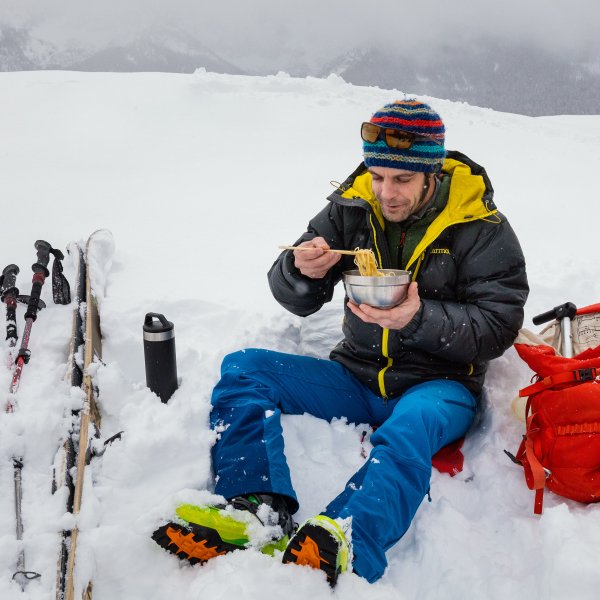
Cheese sandwiches and Landjäger sausages were yesterday: Food expert Sven Christ shows us the art of real outdoor cooking. Part 4: A strengthening ramen soup for the next ski tour
Sometimes it's just not meant to be. For weeks we talk about when and where I should go on my first ski tour, rather relaxed in the gentle Kleinwalsertal or even better under good guidance in the high mountains somewhere in the Engadine, and then: Achilles' heel is inflamed. One day before departure. But I had already started with the preparations, I wanted to have the perfect food for everyone - to at least shine culinary brilliance, if I was already stopping the group.
During ski tours, you don't just slide from the nice baker in the valley resort to the hearty hut snack and finally to the humid and cheerful après-ski madness as is so often the case with piste skiing. Quite the opposite, you work your way up the mountain without any technical help and outside catering in order to descend it once again. A principle that completely convinces me as a ski touring freshman. In any case much more than the classic skiing with lift and après-ski. But my focus as a cook is of course: How can I guarantee that I won't starve to death on the road?
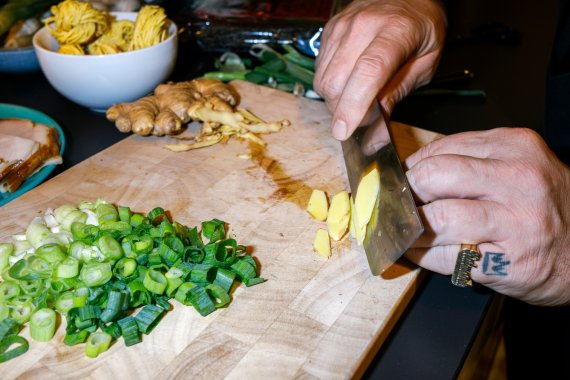
A sensible food intake during ski tours isn't easy. Cheese sandwiches or Landjäger sausages are not helpful for start and break because they are much too heavy and make you tired. The guidelines: It should be nutritious, preferably warm, carbohydrates would be good, and something isotonic is also a must. Then I remembered that a friend of mine who was in Japan last winter for off-piste skiing had raved about the ski lodges in Hokkaido and the ramen soups they served everywhere.
A portion of ramen with all the trimmings can easily reach the caloric value of 600 or 700 calories, you can save the protein bar, and the fats are all in the positive range
I was immediately thrilled because it actually sounds like the perfect winter-sports meal. It contains the mentioned carbohydrates, lots of proteins, minerals, fat, keeps warm, has liquid and tastes insanely delicious. There are different types of ramen, from carnivorous to vegetarian and vegan. I chose a Tonkotsu Ramen with sesame paste cooked from pork bones, which in combination with the essential sesame is rich in calcium, selenium and magnesium. A portion of ramen can easily reach the caloric value of 600 or 700 calories with all the trimmings, you can save the protein bar and the fats are all in the positive range.
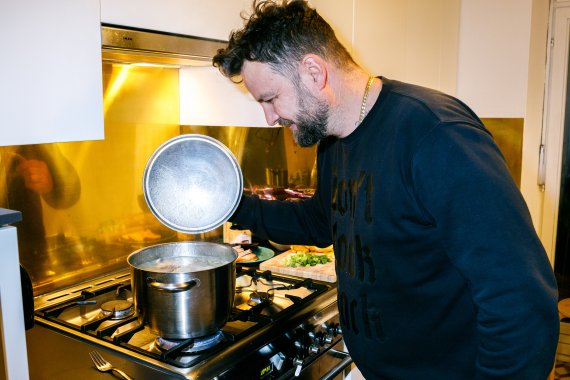
For the broth I buy 1 kilo of pork bones from the butcher, with not too much meat on it. These are first boiled in 2 litres of water for 5 minutes, then pour the liquid away and wash the bones clean again. Unlike us Europeans, the Japanese do not appreciate the first brew, and this technique prevents too many cloudy substances and unwanted tastes in the brew. For the Tonkotsu you also use only one peeled, diced onion in the broth, but 10 white mushrooms and the bones mentioned above.
Making the Tonkotsu takes some time, but it is worth it. And the result can then be perfectly portioned and frozen
Bring everything back to the boil in a clean pot and keep the broth on a rolling boil for a few hours, not simmer, even though Alfons Schuhbeck always preaches that. It is better to put a lid on it and heat it up to full throttle, topping up water from time to time. After a few hours the broth becomes milky cloudy, but even then we let it boil for another 3 hours. A total of 12 hours is ideal. Making the Tonkotsu takes some time, but it is worth it. And you can then portion and freeze the result perfectly. For an entire ski touring winter.
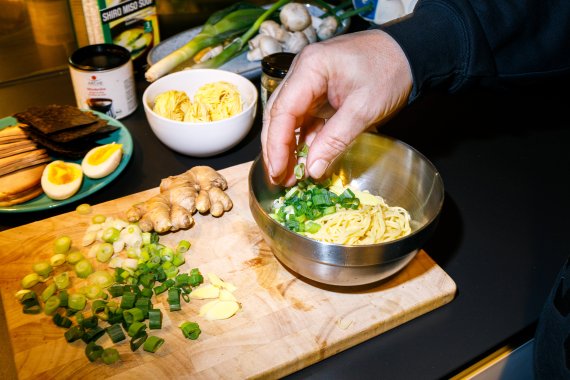
The boys are leaving tomorrow. Even without me. The first snow has arrived. I decide to donate my first ski soup to you for an evening tour in the fresh snow. So I still boil eggs by putting them in cold water and take them out after 8 1/2 minutes and chill them well, in addition I precook Mie noodles and also chill them. So the next morning skiers can bring the broth to the boil again, season it with a teaspoon of miso powder, stir in one teaspoon of sesame paste per person - and then pour the broth into thermos flasks.
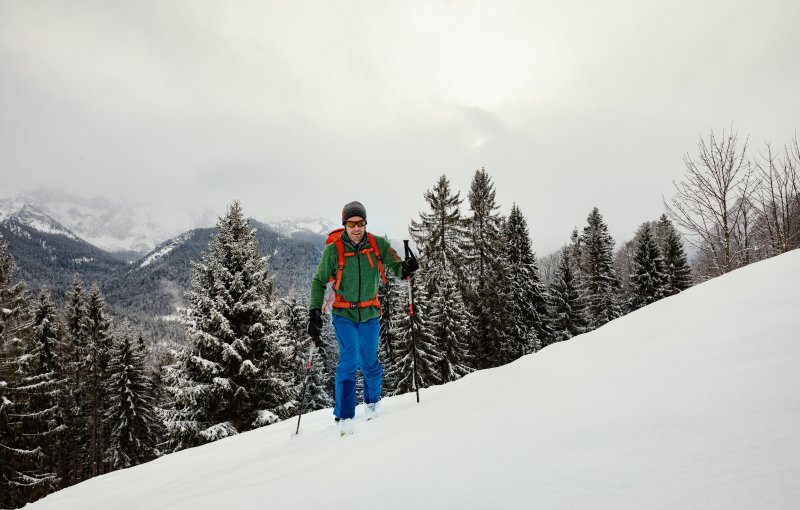
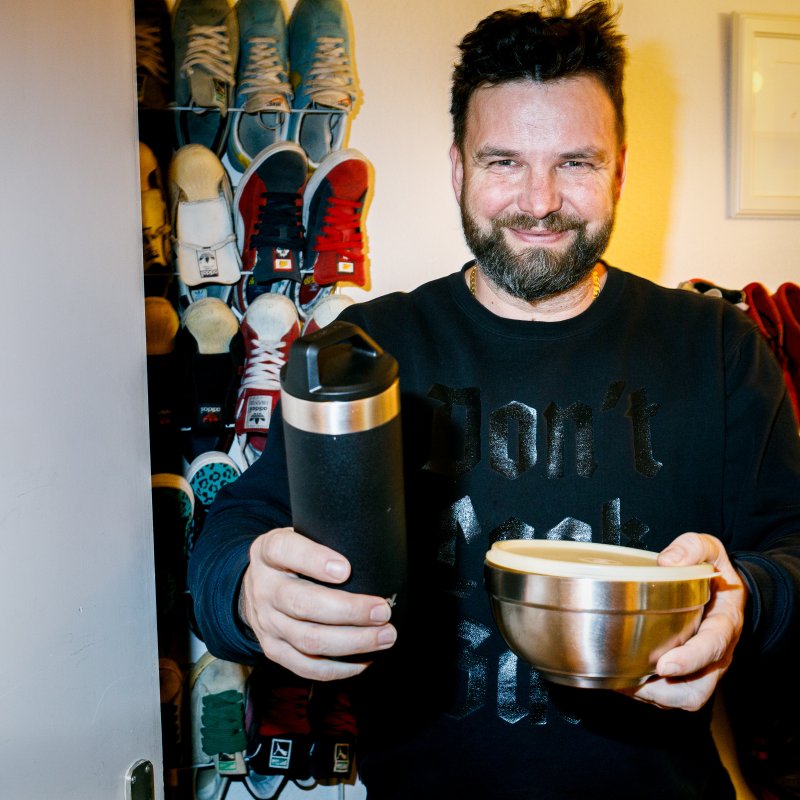
I deposit the noodles in small, lockable bowls with lids - which will serve as soup bowls tomorrow. On top of that I put chopped spring onion, a piece of roast pork (ready from the butcher), the peeled egg - and then lid on it. Separately I pack some nori algae for the special taste. And chopsticks, of course.
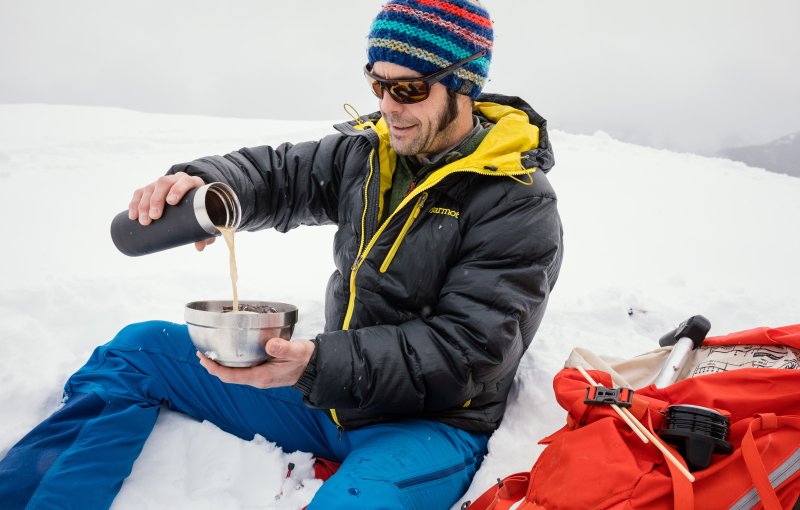
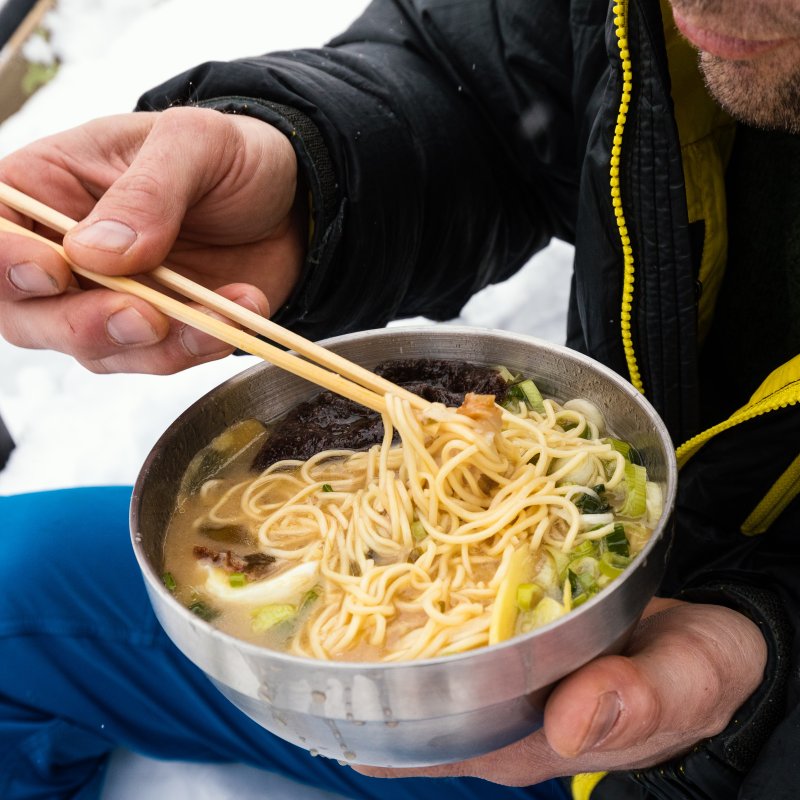
This way you have less weight in your backpack than with the usual snack and tea combination. On the mountain you just have to pour the broth over the soup, close the lid for another minute and then add the nori leaf, then all the components are warm and you have the perfect outdoor ramen. I convinced the first ski touring friends right away. I ate my ramen comfortably at home, watched the snowstorm on the webcams and was happy too. I will certainly get to go for my first ski tour. The winter is still long. And my ramen-doping is already prepared.
Ingredients:
1 kg pork bones
10 white mushrooms
1 onion
1/2 tbsp salt
200g Mie noodles
2 tbsp Miso powder
2 tbsp sesame paste
4 spring onions
2 eggs
2 nori leaves
2 slices roast pork, cold
Thermos bowl
Thermos flask